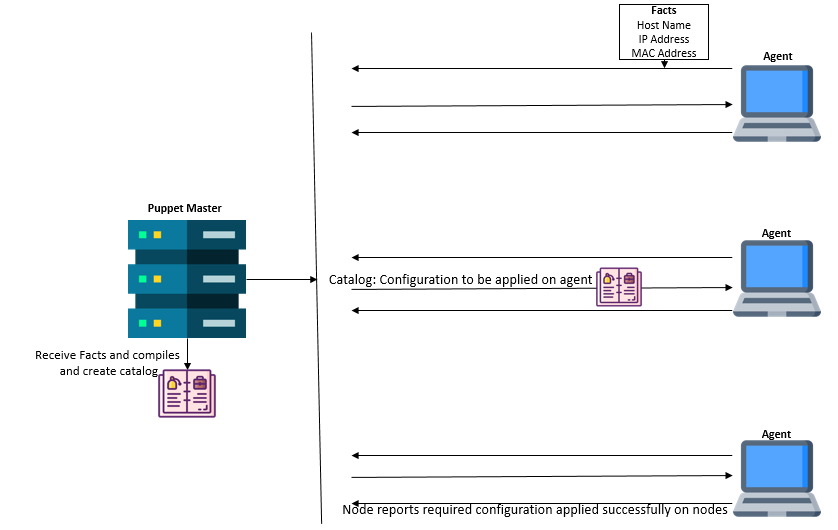Will see About puppet in this post. Puppet is a open source configuration management tool. Which will help us to reduce our working time by automating most of the day-to-day and other tasks in IT environment.
puppet is declarative one(Puppet domain specific language).
Puppet take care of all our regular repetitive task along with application deployment. configuration changes,etc.
Puppet written in Ruby.
Puppet is scale-label, which can be used any physical/virtual environments.
Codes written in puppet are idempotent by naturally.
It easily create/update and maintain the OS configuration files using its own declarative methods.
We can do below things using puppet on our OS without any human intervention.
* Installing application on various machines
* Managing Firewall ports
* Modifying configuration files
* Managing services, etc.
We have N number of Resources and Classes to build easily a complex environment over VMWare, Any Cloud environments.
How Puppet Works?
- We have Master and agent concept in Puppet environment.
- Master should be Installed and configured on Linux machines only and there is no support for Windows machine. But Agent can be Linux or Windows machines.
- We have two deployment models
- Master-Agent deployment : Master and agent machines different machines. Master will manage the agent machines. Its used for Production environment
- Standalone deployment: Master and agent both packages are installed on one server and its used for Dev/Test Environment.
- Puppet Master are Linux based machine where we need to install and configure “puppetserver” package and this will be responsible to create and maintain puppet codes to manage agent machines.
- Agent machines are different servers in our environment which we would like to manage using puppet.
- “Puppet-agent” package should be installed on agent machines
- Agent machines will check with Master every “1800 Seconds(30 Mins)” to know if anything to be updated on agent machine.
- If anything needs to be updated, Agent will pull from Master machine through puppet codes and this will be called us “pull mechanism” and will do required updates which is mentioned in puppet codes.
- And we have “Push and Pull” based deployment.
- In Push based, master will push the configuration updates to their agent machines
- In Pull based model, Agents will establish connection with master and will pull the updates from master in periodic interval.
Workflow:
- Administrator Login on Puppet Master to create/ Update puppet codes and this machine is responsible for puppet code management and contains different configurations in environment.
- We have multiple agents in environment and puppet-agent package installed on agent machines.
- Communication between master and agent will be established through secured certificates.
- Puppet master will allow agent machines through port 8140
- We make sure port 8140 enabled on firewall
- Communication between master and agent has three steps
- Once communication established, Agents send data to Master and the data includes, Host name, IP Address and MAC Address. These are called as facts.
- Master uses this facts and compile a list with configuration which needs to be applied on agent and this will be called as catalog.
- Catalog contains data such as packages to be installed/services, etc. which needs to be updated on agent machines based on puppet codes which wrote.
- Agent uses the catalog to apply required changes on the nodes
- Once agent received catalog, it will do required changes and nodes will report to master that will say the configuration has been applied ans successfully completed.
- Puppet provides compatibility to get these reports using third party tools.
Reference: Puppet official Docs

